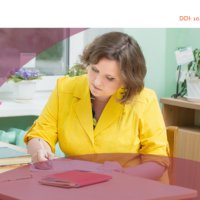self-harm
-

Understanding Self-harm & Suicide – Ask the Expert (recording)
For this teachers and education professional session welcomed Professor Dennis Ougrin to share his knowledge and insights into self-harm and suicide; specifically exploring the complexity around this phenomenon, by providing data on prevalence, risk factors and strategies for support.
Read more -

Understanding Self-Harm
TRIGGER WARNING: Please be aware that this blog discusses self-harm, including personal experiences of self-harm. It is estimated that between 10%-20% of all people self-harm at some point during their lifetime. It is hard to gather exact figures due to the stigma surrounding self-harm, and because people try to hide their wounds, scars and bruises. Watch this 8-minute film to understand more.
Read more -

How isolation and secrecy fuel the self-harm flames
During Mental Health Awareness month in May 2022 – focused on the role of loneliness – Nip in the Bud listened to experts and those who have been through it to understand the vicious cycle of trying to cope alone. (TRIGGER WARNING: Please be aware that this blog discusses self-harm, including personal experiences of self-harm.) This blog was published by Nip in the Bud on 27 May 2022.
Read more -

NICE guidelines for self-harm: a new school of thought
New NICE guidelines for the management of self-harm in the UK emphasise the important role of non-specialists. In this article, Holly Crudgington and Dennis Ougrin discuss this guidance, focusing on the new advice for schools and its implications.
Read more -

CAMH Editorial: Volume 26, Issue 4, November 2021
Supporting children and young people (CYP) who self-harm (SH) is an important work of Child and Adolescent Mental Health Services (CAMHS). This theme is reflected throughout this issue.
Read more -

Self-harm & Self-Injury – Episode. 9 ‘Autism a parents guide’
For this podcast, focusing on autistic children who harm themselves, we are joined by Dr. Ann Ozsivadjian, and Dr. Penny Williams. This podcast is supported by Clinical Partners.
Read more -

How effective are tools to help school staff better respond to young people who self-harm?
Aureliane Pierret and colleagues at the University of Cambridge carried out a systematic review into the effectiveness, feasibility and acceptability of interventions and tools to support school staff to better respond to young people who disclose self-harm.
Read more -

Conflating risk and mental illness
In this thoughtful article, a young person, Anna, reflects on her experience of risk being conflated with mental illness in child and adolescent mental health services (CAMHS), highlighting crucial lessons for clinicians, commissioners, and policy makers.
Read more -

Literature review of support tools for school staff to respond to CYP self‐harm – CAMHS around the Campfire recording
A review of literature of support tools for school staff to respond to CYP self‐harm, with the focus on Aureliane Pierret (pic), Dr. Joanna Anderson, Professor Tamsin Ford, and Dr. Anne‐Marie Burn, CAMH paper ‘Review: Education and training interventions, and support tools for school staff to adequately respond to young people who disclose self‐harm – a systematic literature review of effectiveness, feasibility and acceptability.’ ACAMH members can now receive a CPD certificate for watching this recorded lecture.
Read more -

Dr. Joan Asarnow
Dr. Joan Asarnow is a Professor of Psychiatry and Biobehavioral Sciences at UCLA and Director of a SAMHSA-funded Center for Trauma-Informed Suicide, Self-Harm, and Substance Abuse Treatment and Prevention (ASAP Center, with Co-Director Dr. David-Goldston) which offers trainings, consultation, and technical assistance on trauma-informed approaches to evaluation and treatment for reducing suicide and self-harm risk.
Read more
